 Home
Gallery
Contact
Events & Projects
Projects: 2019 On
Film & TV
Archive & Links
Home
Gallery
Contact
Events & Projects
Projects: 2019 On
Film & TV
Archive & Links
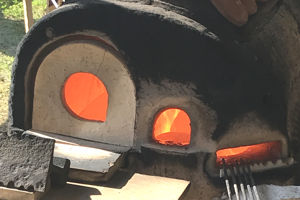
 Home
Gallery
Contact
Events & Projects
Projects: 2019 On
Film & TV
Archive & Links
Home
Gallery
Contact
Events & Projects
Projects: 2019 On
Film & TV
Archive & Links
|

|
2019 IFoG Furnace and Lehr at Stourbridge - Collars, Stoppers, Pots, Shelves and Other Furniture
Projects: 2019 Onwards
Daub Creation
Furnace Build
Lehr Build
Furnace Disassembly & Reassembly
Testing Furnace for Size
Lehr Disassembly & Reassembly
Collars, etc.
Assembly at Stourbridge
Glassblowing at Stourbridge
Disassembly at Stourbridge
|
Collars, Stoppers and Plugs
We made the collars and stoppers for the main gathering hole and for the hole for the ash pit by pressing daub into a one inch deep arch-shaped form. The forms for the centre of the collars were made from a reel of tape and a cut-off plastic paint tin, both with a wooden triangle taped to them. The wooden arch form was also used to make the shapes of the gathering holes (as can be seen in the photos of the furnace build). The smaller stoppers for the small gathering holes and the pipe warming holes were shaped by eye - a form wasn't used - and we drilled small holes in the stoppers so we were able to pick them up using a short metal rod (or, indeed, a bit iron). We fired all of the stoppers and collars in our small furnace (originally built for slumping mosaic glass and ribbed bowls). The first load was fired at 1200° centigrade, which was too hot - the shrinkage was too great and some of the stoppers bent, so we fired the others at about 1050° centigrade. The main gathering hole with the shelf could take a thickness of three collars and/or stoppers; similarly, the ash pit hole could take three stoppers. The two plugs were shaped by pressing daub into a six inch-long tapered cardboard tube; the same ones used to create the holes at the base of the firing chamber. They were also fired to about 1050° centigrade. We used clingfilm as a separator between the forms and the daub. It is thin and easily takes the shape of the form. |
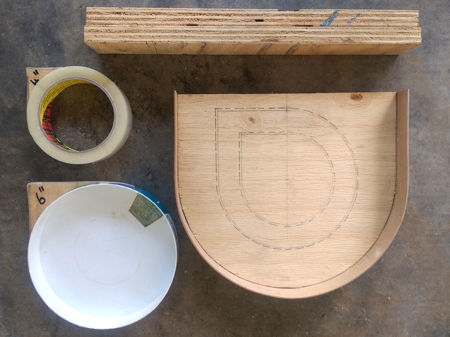
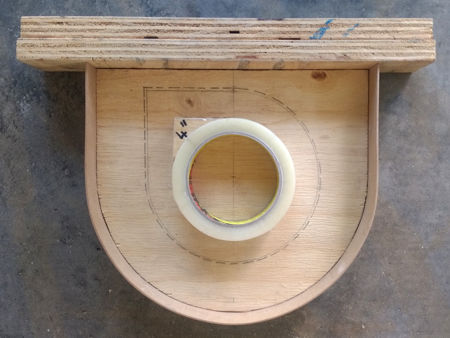
|
|
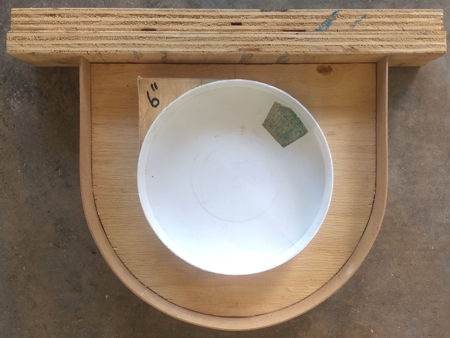
|
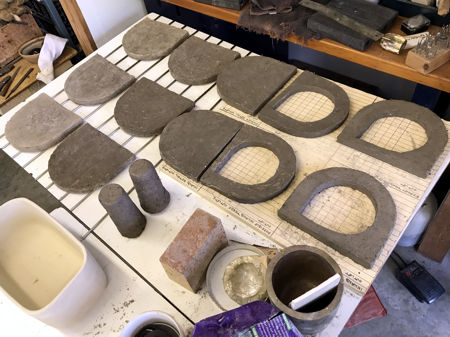
|
|
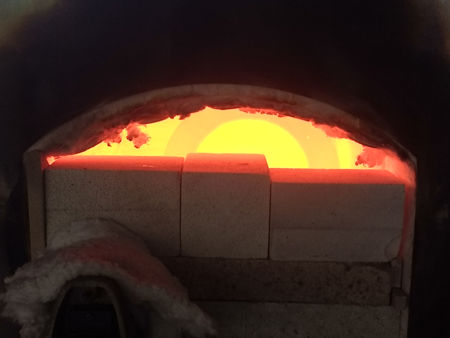
|
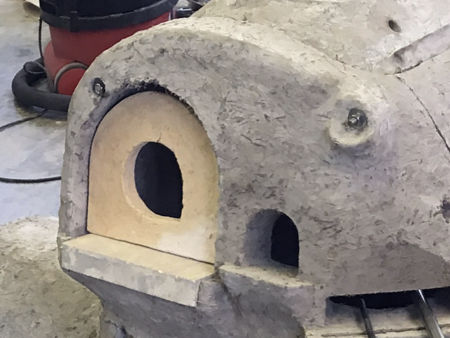
|
|
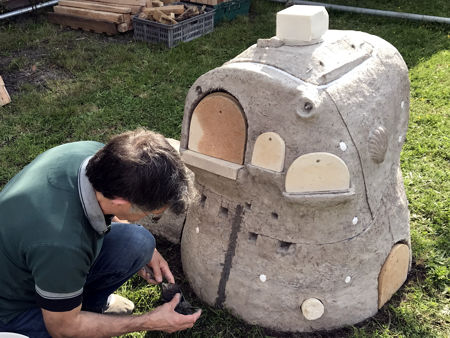
|
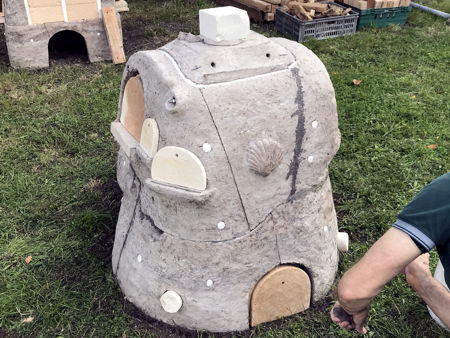
|
|
Pots
We slipcast and pre-fired all of the pots we used up to 1300° centigrade. The sequence of photos show the making of the mould for the large pot, and slipcasting a pot. A bendy, cut-off dustbin worked well as the outer form for the plaster mould (we used potter's plaster with 10% Crystacast - a hard plaster - to make the mould more durable). It was pulled into an oval shape using some 10mm studding with nuts and washers. We made rectangular pots so we could have two large pots side by side in the melting chamber. Also, we made them deeper at one end so that it would be easier to empty them at the end of the working day (the furnace was only fired during the day). Their walls were 6mm - 8mm thick. Any thicker would have wasted the clay used for slipcasting them. The small pots were similarly made and fired before use. We cast them in one of our pre-existing moulds.
The recipe we use for making our pots is:
|
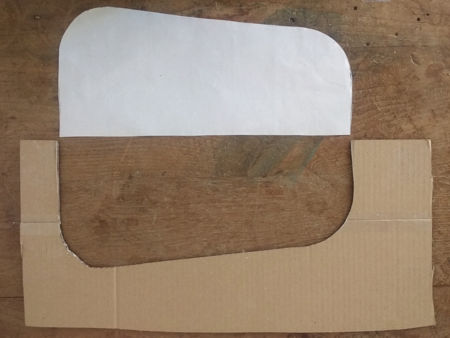
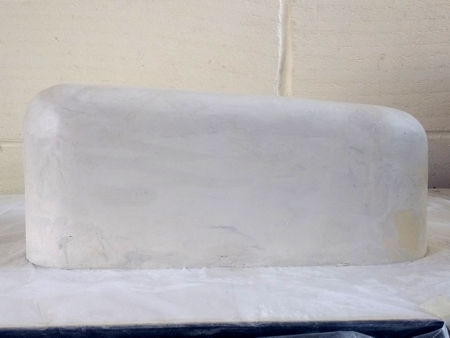
|
|
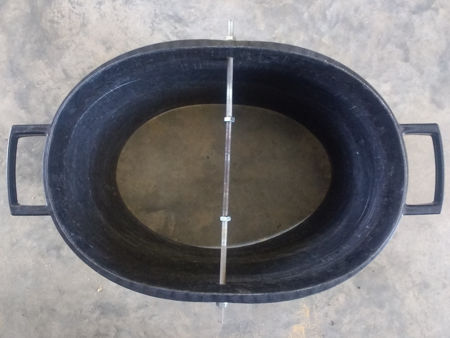
|
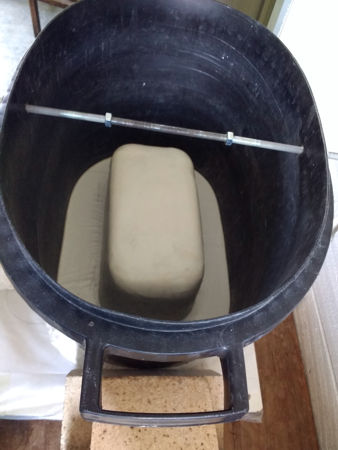
|
|
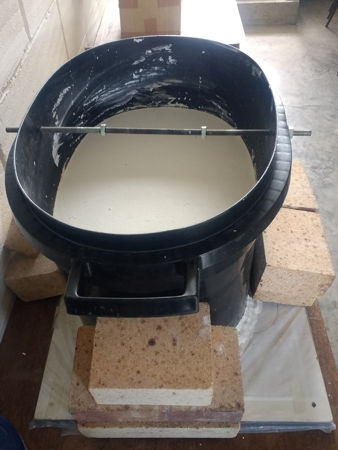
|
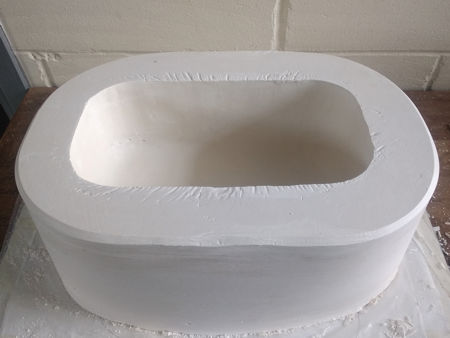
|
|
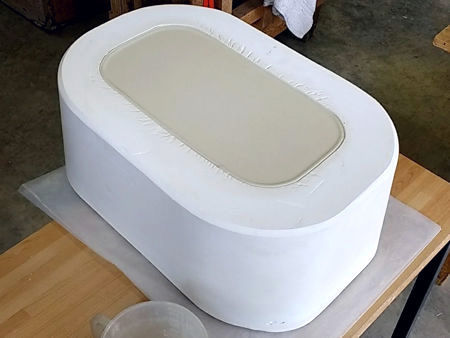
|
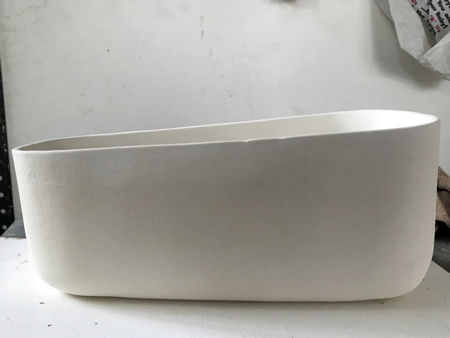
|
|
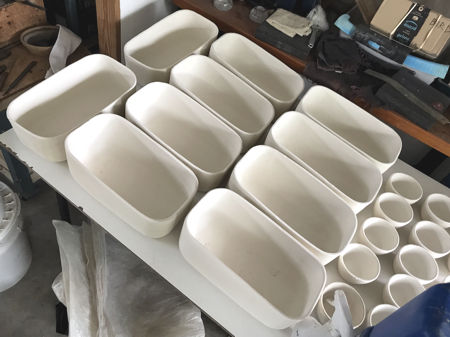
|
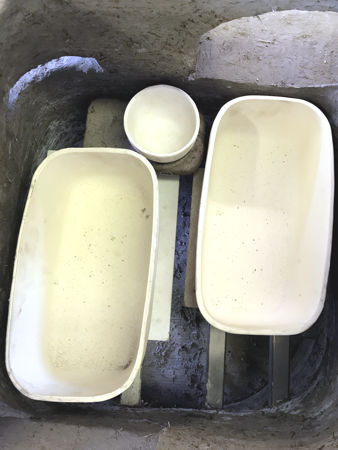
|
|
Shelves and Other Furniture
The shelves for the main pots were cut from second-hand ¾" thick kiln batts and rested directly on the stainless steel shelf supports. The shelves for the small pots were made from daub moulded freehand and fired to 1050° centigrade. They each sat on two small stainless steel bars and the pot rested in a circular depression in the shelf. The gathering hole floors were 1½" firebrick splits, chosen as they are heavy, solid and hard-wearing. The pipe warming supports were a long rectangle cut from a kiln batt, and with hemispherical slots carved into it. The support fitted into a long slot in the daub shelf in front of the warming hole. 304 or 316 grade stainless steel was used for the large and small shelf supports and for the 8mm diameter furnace tie rods (with their nuts and penny-washers). (10mm diameter mild-steel studding was used for the annealing oven tie rods.) We made two wedge-shaped location shelves for the lehr doors from daub. These allowed the doors to rest firmly against the sloping lehr end walls, so closing the entrance holes. The rake and pastorello were made from scratch and the two small shovels were made by adapting a ladle and a hand potting scoop - both stainless steel. |
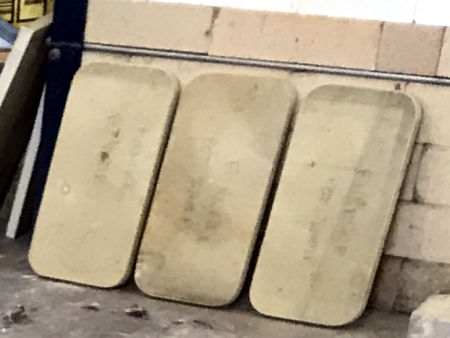
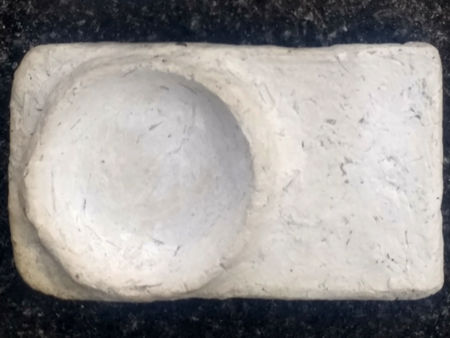
|
|
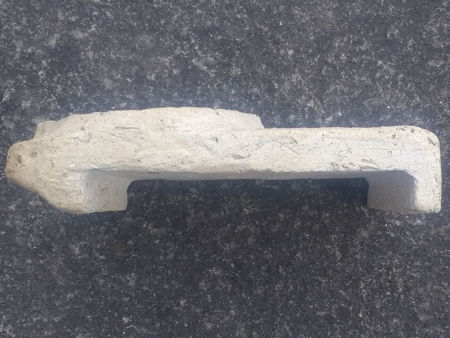
|
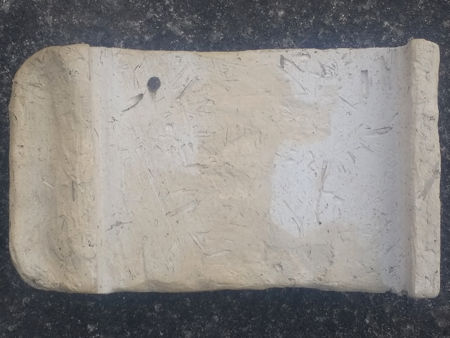
|
|
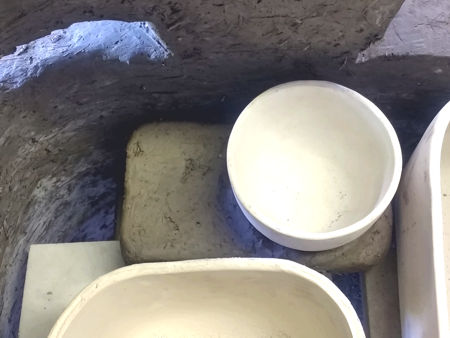
|
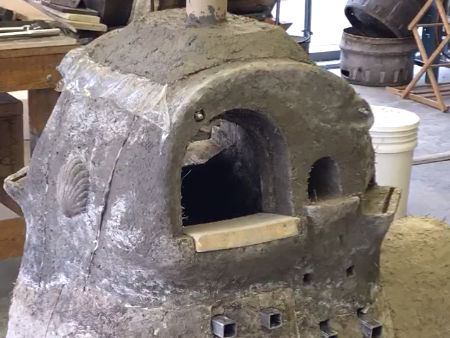
|
|
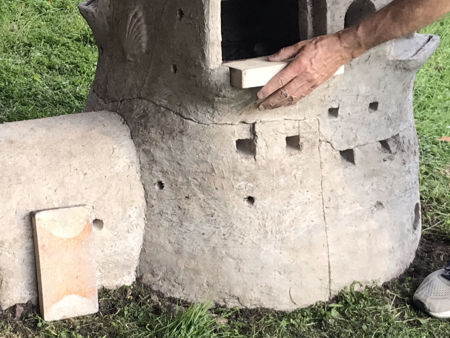
|
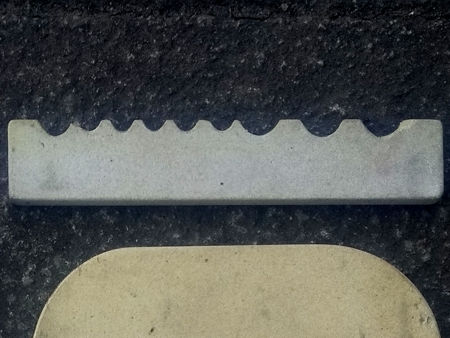
|
|
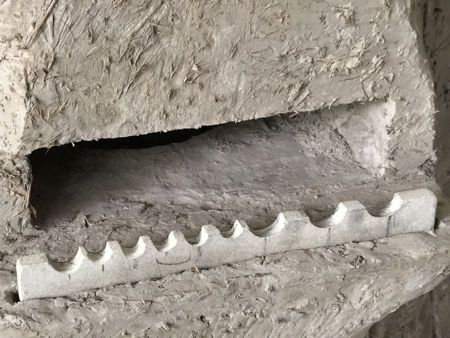
|
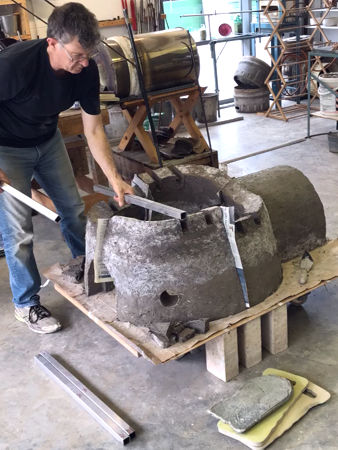
|
|
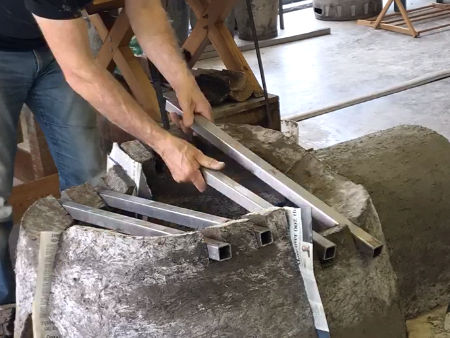
|
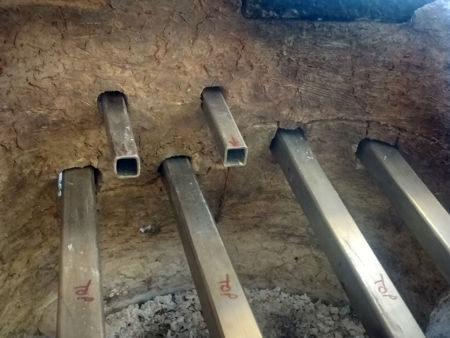
|
|
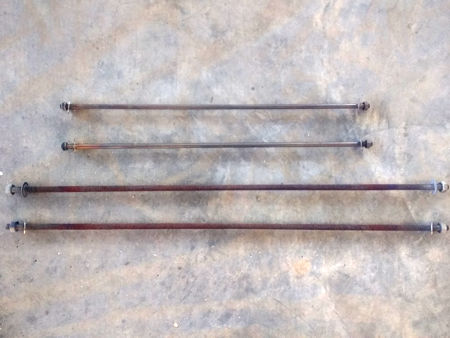
|
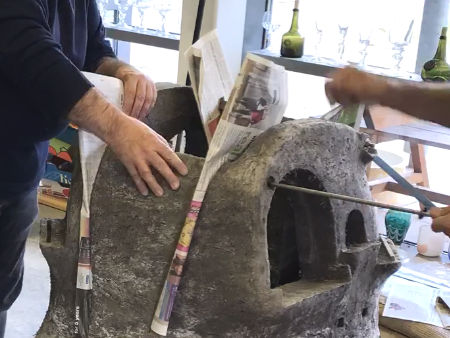
|
|
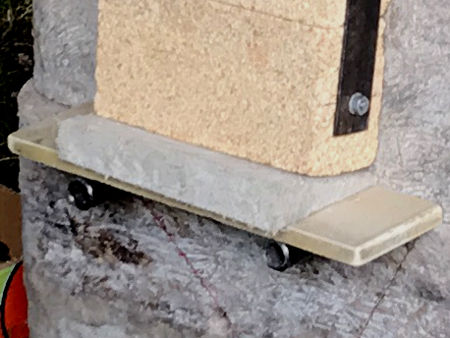
|
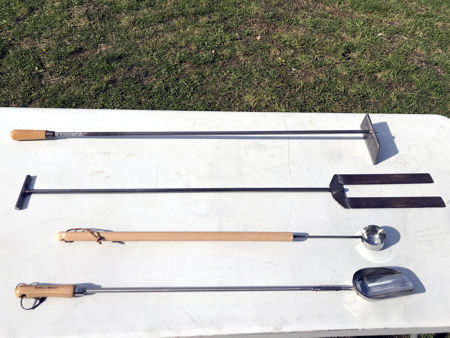
|
Home Gallery Contact Events & Projects Projects: 2019 Onwards Film & TV Archive & Links